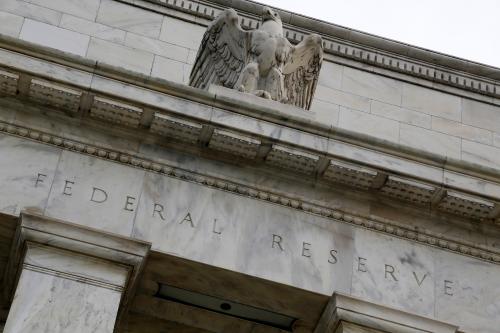On Wednesday, July 18, Eswar Prasad delivered a testimony to the U.S. House of Representatives Committee on Financial Services Subcommittee on Monetary Policy and Trade. View his full testimony and learn more about the hearing.
In my remarks, I will focus on the implications of the evolution of new financial technologies, including but not limited to cryptocurrencies, for central banking. This testimony will accord particular attention to issues surrounding (i) the implementation and transmission of monetary policy and (ii) financial stability. I will also discuss the pros and cons of central bank digital currencies (CBDC).1
While the advent of decentralized cryptocurrencies such as Bitcoin has dominated the headlines, a broader set of changes wrought by advances in technology are likely to eventually have a more profound and lasting impact on central banks. It is premature to speak of disruption of traditional concepts of central banking, but it is worth considering if the looming changes to money, financial markets, and payments systems will have significant repercussions for the operation of central banks and their ability to deliver on key objectives such as low inflation and financial stability.
- There are many potential advantages to switching from physical to digital versions of central bank money, in terms of easing some constraints on traditional monetary policy and providing an official electronic payments system. The basic mechanics of monetary policy implementation will not be affected by a switch from physical currency to CBDCs. However, other technological changes that are likely to affect financial markets and institutions could have significant effects on monetary policy implementation and transmission.
- New financial technologies—including those underpinning nonofficial cryptocurrencies—herald broader access to the financial system, quicker and more easily verifiable settlement of transactions and payments, and lower transaction costs. Domestic and cross-border payment systems are on the threshold of major transformation, with significant gains in speed and lowering of transaction costs on the horizon. The efficiency gains in normal times from having decentralized payment and settlement systems needs to be balanced against their potential technological vulnerabilities and the repercussions of loss of confidence during periods of financial stress.
- Multiple payment systems could improve the stability of the overall payments mechanism in the economy and reduce the possibility of counterparty risk associated with the payment hubs themselves. However, multiple systems without official backing could be severely tested in times of crisis of confidence and serve as channels for risk transmission. Decentralized electronic payment systems are also exposed to technological vulnerabilities that could entail significant economic as well as financial damage. CBDCs could function as payment mechanisms that provide stability without necessarily limiting private fintech innovations.
- Financial institutions, especially banks, could face challenges to their business models, as new technologies facilitate the entry of institutions (or decentralized mechanisms) that can undertake financial intermediation and overcome information asymmetries. Banks will find it difficult to continue collecting economic rents on some activities that cross-subsidize other activities. The emergence of new institutions and mechanisms could improve financial intermediation but will pose significant challenges in terms of regulation and financial stability.
- New forms of money and new channels for moving funds within and between economies could also have implications for international capital flows and exchange rates. The proliferation of channels for cross-border capital flows will make it increasingly difficult for national authorities to control these flows. Emerging market economies will face particular challenges in managing the volatility of capital flows and exchange rates, and could be subject to greater monetary policy spillovers and contagion effects. These channels are also susceptible to exploitation for money laundering, illegal activities, and evasion of controls and reporting requirements related to cross-border capital flows.
The Brookings Institution is committed to quality, independence, and impact.
We are supported by a diverse array of funders. In line with our values and policies, each Brookings publication represents the sole views of its author(s).





Commentary
TestimonyThe future of money: digital currency
July 18, 2018